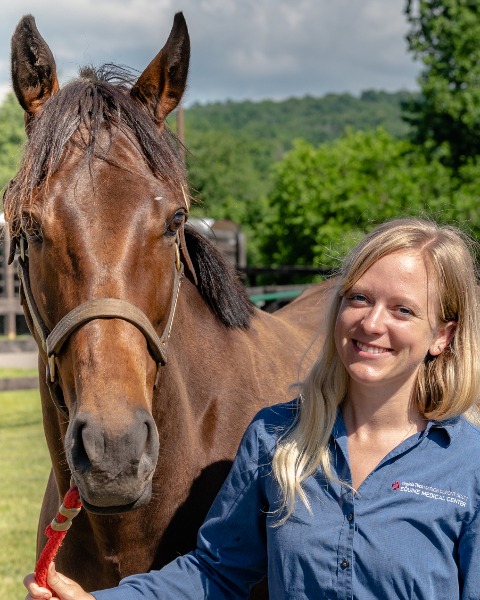Back
abs: CT Guided Equine Paranasal Sinus Surgery
Large Animal
abs: CT Guided Equine Paranasal Sinus Surgery
Surgery and Adjunct Therapy to Successfully Treat Cutaneous Neoplasia in Horses
Saturday, October 15, 2022
3:30pm – 3:45pm
Location: C125-126

Teresa Hopfgartner, DVM
Equine Surgery Resident
Marion DuPont Scott EMC
Waterford, Virginia
Abstract Presenter(s)
The recent availability of standing computed tomography (CT) has allowed accurate identification of paranasal sinus disease enabling targeted surgery that is thought to result in superior outcome. To date, there are no studies critically evaluating the benefit of CT versus traditional radiography and sinoscopy (RS) on surgical complications and outcome. The aim of the study was to compare complications and resolution of disease in horses undergoing sinus trephination using either CT or RS. Records of equids undergoing sinus surgery were reviewed. A total of 230 equids were included (160 CT and 70 RS). The groups did not differ in demographics or disease category. Short-term complications were more common in CT versus RS (35% versus 18.6%) (p = 0.01), with hemorrhage being the most common. Resolution of disease did not differ between groups and occurred in 56.6% (127/224) following initial treatment and 94.2% (211/224) after repeat medical and surgical treatment. More nasal fenestrations to improve sinonasal drainage, fenestrations of the maxillary septal bulla and trephinations to treat nasal conchal bullae were made in the CT group. Inadequate access requiring conversion to bone flap was required in four RS cases (p = 0.02). CT allowed a targeted approach to specific compartments not readily identifiable with RS but was associated with higher short-term complications and hemorrhage due to improving sinus drainage. CT provides additional information that benefits surgical planning and should be considered when extensive paranasal compartment involvement is suspected. Study limitations are its retrospective nature and reliance on owner follow-up information.
